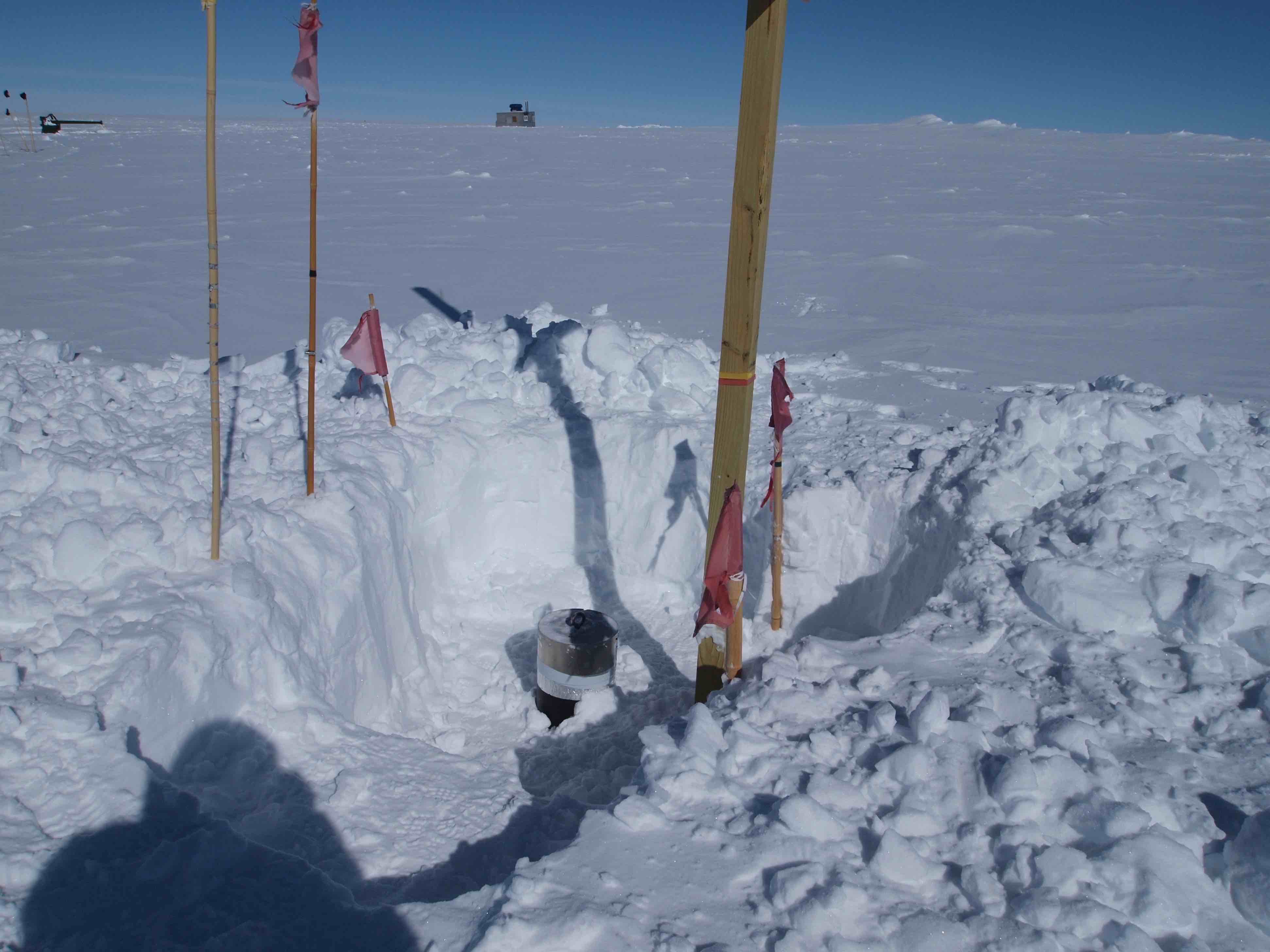Pumped!
Among our first tasks here at Summit Station is to pump fluid out of a borehole. Typically, when climate scientists and glaciologists drill for ice cores, they backfill the holes with fluid for a couple of reasons.
Without any fluid in the holes, which can be miles deep but only inches in diameter, the pressure from the surrounding ice can cause the borehole to collapse in on itself. For that to work, of course, you need to use a fluid with a freezing point lower than the temperature of the ice, so typically, drillers use a hydrocarbon.
Glaciologists often use the boreholes are to measure the temperature of the deep ice by slowly lowering thermometers down the hole. The measurements are greatly improved if one maintains good thermal contact with the ice. A fluid over time equilibrates to the temperature of the ice much better than air does.
But we don’t care about all that for now. We need to pump out the fluid, which is a paraffin-like fluid called Isopar K, so that we can lower our electronics along with our antennas. Radio-frequency receivers benefit from placing amplifiers as close to the antennas as possible, so that you only amplify a minimum amount of noise. It’s prohibitively expensive to buy watertight, RF-tight, and pressurized enclosures for our amplifiers, so instead we’ll be pumping the fluid out. We’ll put it back in before we go to make sure the hole doesn’t collapse.
We had to first find the borehole. Summit accumulates 60 cm of snow every year. So we had to dig out a trench ~ 3 ft deep. We made sure to dig a flat ground below the borehole, rather than a funnel into the borehole. Seems that the latter option is a rookie mistake.

We’re all ready to start pumping tomorrow. Stay tuned.